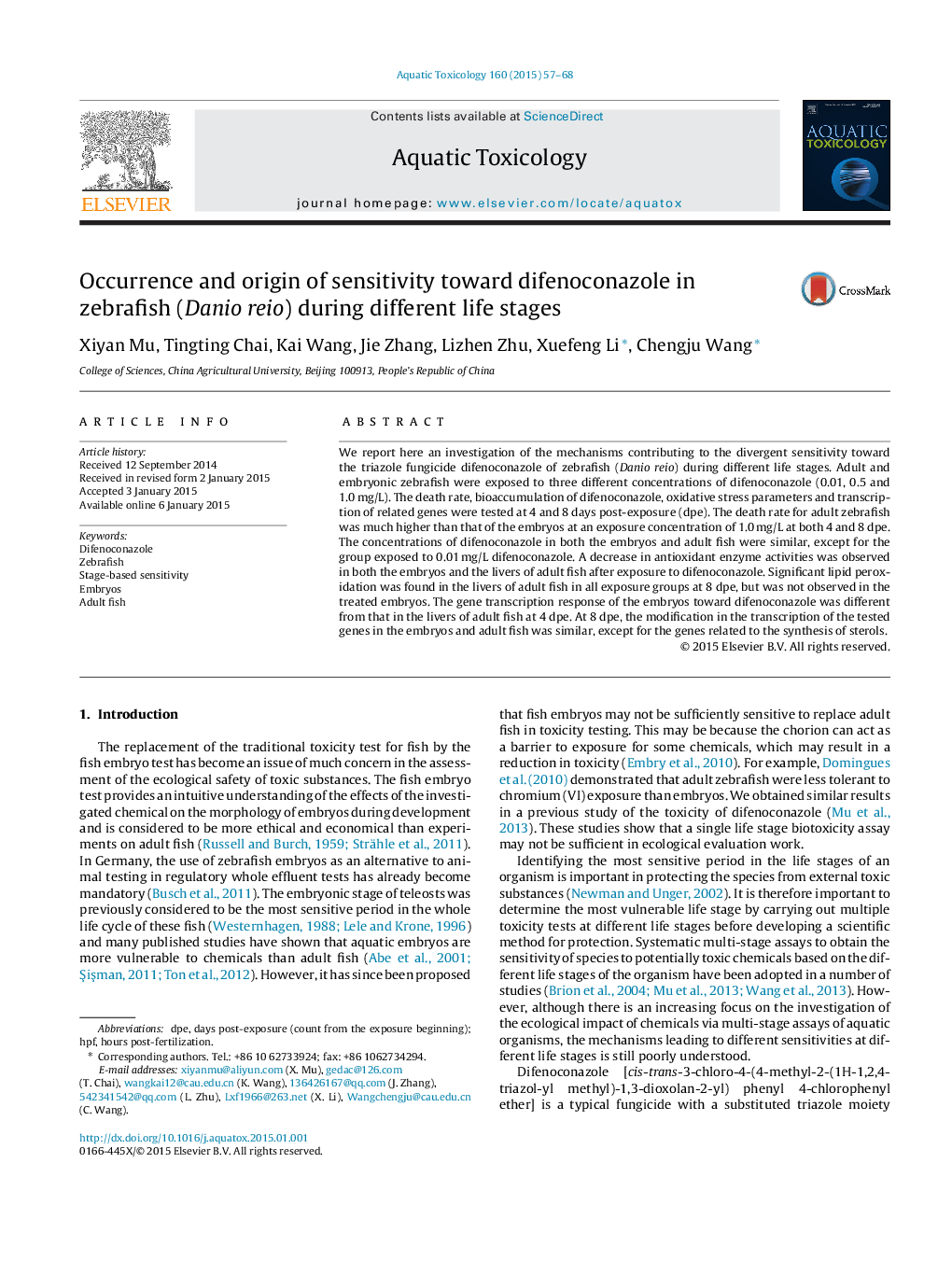| Article ID | Journal | Published Year | Pages | File Type |
|---|---|---|---|---|
| 6382237 | Aquatic Toxicology | 2015 | 12 Pages |
Abstract
We report here an investigation of the mechanisms contributing to the divergent sensitivity toward the triazole fungicide difenoconazole of zebrafish (Danio reio) during different life stages. Adult and embryonic zebrafish were exposed to three different concentrations of difenoconazole (0.01, 0.5 and 1.0Â mg/L). The death rate, bioaccumulation of difenoconazole, oxidative stress parameters and transcription of related genes were tested at 4 and 8 days post-exposure (dpe). The death rate for adult zebrafish was much higher than that of the embryos at an exposure concentration of 1.0Â mg/L at both 4 and 8 dpe. The concentrations of difenoconazole in both the embryos and adult fish were similar, except for the group exposed to 0.01Â mg/L difenoconazole. A decrease in antioxidant enzyme activities was observed in both the embryos and the livers of adult fish after exposure to difenoconazole. Significant lipid peroxidation was found in the livers of adult fish in all exposure groups at 8 dpe, but was not observed in the treated embryos. The gene transcription response of the embryos toward difenoconazole was different from that in the livers of adult fish at 4 dpe. At 8 dpe, the modification in the transcription of the tested genes in the embryos and adult fish was similar, except for the genes related to the synthesis of sterols.
Related Topics
Life Sciences
Agricultural and Biological Sciences
Aquatic Science
Authors
Xiyan Mu, Tingting Chai, Kai Wang, Jie Zhang, Lizhen Zhu, Xuefeng Li, Chengju Wang,
